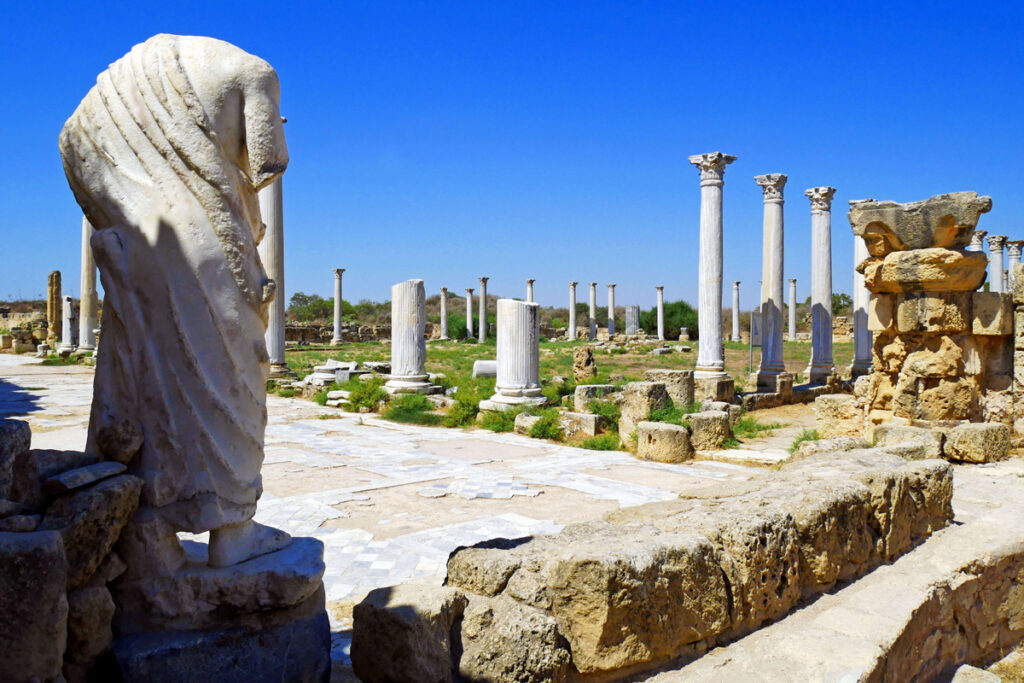Exploring the Island's Historic Treasures
For history buffs and curious travellers alike, Cyprus presents a treasure trove of historic sites waiting to be explored. Prepare to be transported back in time as you delve into some of the island’s most significant landmarks:
Echoes of Ancient Civilizations close to the Pissouri:
Kourion
Perched dramatically on a clifftop overlooking the Mediterranean, Kourion is one of Cyprus’s most impressive archaeological sites.
Explore the remnants of a Greco-Roman city, including a magnificent theatre that still hosts performances today, mosaic-laden villas, and the evocative Temple of Apollo Hylates. The sheer scale and preservation of Kourion offer a palpable sense of the past.
Paphos archaeological park
Declared a UNESCO World Heritage site, Paphos boasts a stunning collection of Roman villas, adorned with intricate and well-preserved mosaic floors depicting scenes from Greek mythology.
The House of Dionysus, the House of Theseus, and the House of Aion are just a few examples of the wonders hidden within this sprawling park.
Nearby, the Tombs of the Kings, an impressive necropolis carved out of solid rock, further showcases the ancient history of the area.
…and some more if you have time.
Kolossi Castle
Fortified 15th-century castle with dungeons
Kykkos Monastery
The Holy Monastery of the Virgin of Kykkos founded in the 11th century by the Byzantine emperor Alexios I Komnenos
St Hilarion Castle
Perched high in the mountain range, overlooking Kyrenia, the Mediterranean and the surrounding areas of North Cyprus.
Bellapais Abbey
Bellapais Abbey built in the 13th century hosts the “Tree of Idleness”
Kyrenia Castle
Kyrenia Castle is a 16th-century castle built by the Venetians over a previous Crusader fortification
…and not forgetting the impressive ruins at Salamis.

Salamis Northern Cyprus
Salamis was believed to have been the capital of Cyprus as far back as 1100 BC, in the late Bronze Age.
It survived successive occupations by many dominant groups over the course of its history, including Assyrians, Egyptians, Persians and Romans, but eventually succumbed to the forces of nature.
